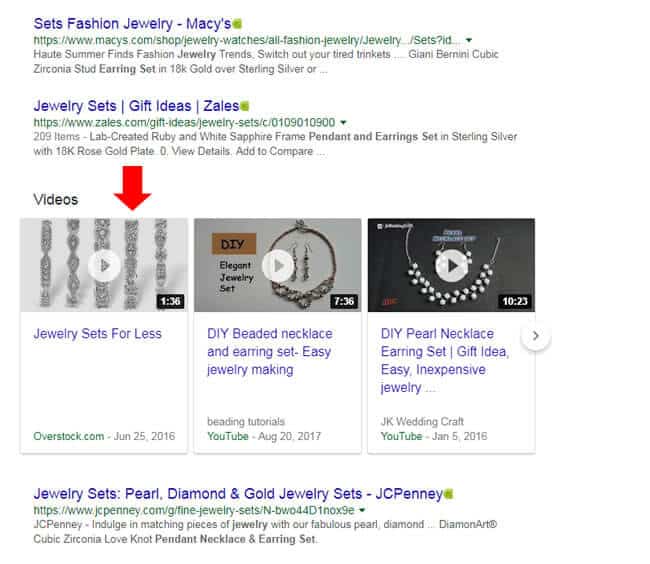Video Carousels Update: A New Way Of Presenting Videos
-

Aaron Gray
-
 April 27 , 2023
April 27 , 2023 -
 4 min read
4 min read
Google changed the way videos are presented in the SERPs by rolling out the carousels update in June 2018. The search engine previously displayed this format with just a thumbnail at the side of the link along with other text blog posts. This time, it has a dedicated section right after the top search result.
What’s It For
The search engine removed the video thumbnail feature and replaced it with the carousel. This move could be aligned with the company’s emphasis on the mobile search since video carousels were only displayed for users on smartphones or tablets before the update. It also makes sense that Google would want to have a uniform look for the SERPs.
The results pages also showed more videos now with an average of 8.5 video thumbnails compared to before with just three links. However, there are still only three videos “above the fold” or in the first viewable part, and users can simply click on the right arrow to see more.
What Were Its Effects
There were complaints that the video carousel feature led to significant drops in click-through rates or CTRs for websites that didn’t optimize the bonus material for their blog posts. Meanwhile, YouTube, Daily Motion, Alibaba, MSN, Coursera, and news publication such as CNN, CNBC, and CBS emerged as victors after the update.
E-commerce websites were hit, mainly when they experienced a drop in organic search listings after having their videos included in the SERP carousels. This led to losses in traffic and, as a result, revenue even when impressions increased.
Websites in other niches or industries were favored by the update and were able to acquire a listing in the carousel with minimal optimization. They won both ways by boosting the visibility of their videos while retaining their organic search listings.
What It Means for You
Videos are currently the preferred medium of content creators and users alike. The format allows publishers to pack in as much information as they can within a short period. One challenge is making it entertaining so that viewers won’t lose interest halfway through the video, but even then you can incorporate visually stimulating like pops of color or text highlights.
Here are ways to maximize your videos and boost their organic ratings:
-
Identify What Type of Content Sparks Joy Similar to blog posts, you can track videos and how many clicks or views they get to understand what type of content attracts and retains your current customers and target audience. Your videos should be sorted in a category and optimized for search.
You can start by: - Analyzing Video Metrics – First, you should use tools to analyze which videos are getting significant clicks and views from your site visitors.
- Dissecting Video Content – Next, you must determine what these videos have in common. You should be able to pinpoint which style, tone, and content the viewers are enjoying.
- Inspecting the SERPs – Lastly, take a look at the results pages and see how your videos are doing for relevant keywords and search phrases.
- Check If You Have Video Content Gaps Do your research on popular searches and make a parallel comparison of the keywords with your video library. It will give you an idea of gaps in the content and how to connect them. For instance, you may already have several videos on how to use your product, but not enough visual guide on practical ways that your customers can maximize it.
-
Add Your Videos into Related Blog Posts Another way to boost visibility for your videos is to add it as a supplemental resource for your blog posts. Look through pages in your website that garner a lot of clicks and incorporate these additional visual aids to offer a more holistic and more vibrant experience to users.
Of course, you have to make sure that the videos and blog posts are related in one way or another. This can be easily remedied by a short paragraph that explains why readers should watch your video to gain more information on a particular topic. -
Take Advantage of Videos to Introduce New Keywords It’s sensible to prioritize the primary keywords for your brand in your videos to strengthen their association with your products and services. However, you can also maximize your video content to introduce new search terms that may not make sense when you use them in your articles.
Most videos have an emphasis on processes and procedures so you can expand your keyword library to include these terms. Possible target keywords could be “guide,” “tips,” “process,” and “method.” This way, your content may show up when users type in these search terms.


